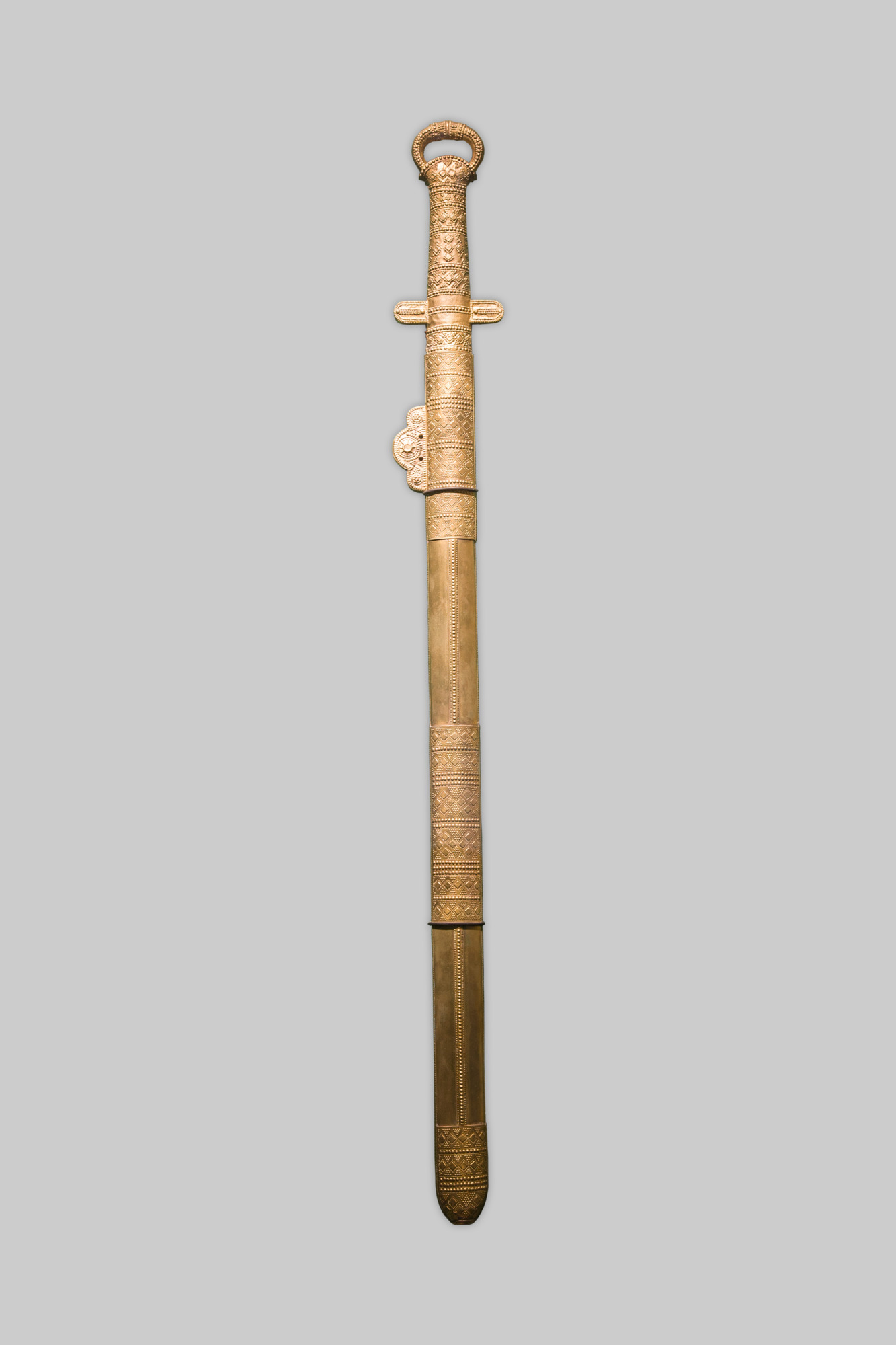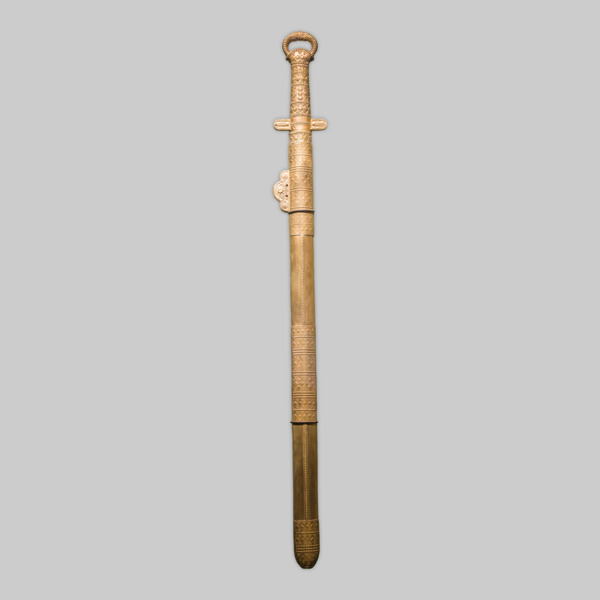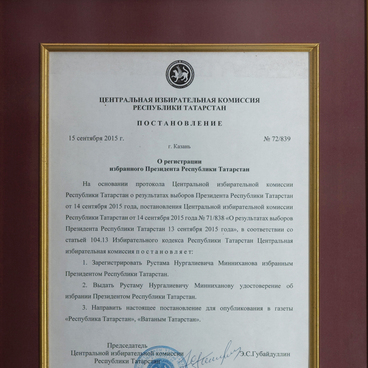The sword of Khan Kubrat was part of the Pereshchepina Treasure, which was discovered in 1912 in Ukraine, near the Malaia Pereshchepina Village in the Poltava Province. The finding consisted of 800 items of gold and silver, which were made by Bulgarian, Byzantine, and Iranian craftsmen. Due to strong rust, the sword was taken out of the excavation in parts. The wooden and bronze parts of the weapon were especially badly preserved.
The sword with the ring was made by Byzantine craftsmen in the 7th century, and it belonged to Khan Kubrat, the founder of Great Bulgaria, which was located on the territory of modern Ukraine, Russia and the North Caucasus. The master made the scabbard of the wood of the Salicaceae family — willow or poplar. The top elements of the handle and the case were covered with gold plates. Experts from the Laboratory for Scientific Restoration of the State Hermitage have established that the top layer consisted of 958 gold.
The length of the handle with the ring completing it was 173 centimetres. On the reverse side, the craftsman placed the first five letters of the Greek alphabet, which indicated the arrangement order for the weapon case’s parts.
Similar swords were common on the territory of the Avar Khaganate — a state used to exist from years 562 to 823 on the territory of modern Hungary, Austria, Slovakia and Switzerland. They were especially popular during the period of the close ties between khans and Byzantium. Weapons with a ring element were found in rich Avar burials of the 7th century.
Most likely, noble warriors used this kind of sword as a ceremonial weapon. In addition, they used to wear a special belt, on which the sword itself was hung, as well as a belt set — pseudo-buckles, a drinking vessel and items of unknown purpose, from which only gold ornamental stripes have been preserved.
The Pereshchepina Treasure, including the original sword of Khan Kubrat, is kept in the collection of the State Hermitage in St. Petersburg. Bulgarian Foreign Minister Ivailo Kalfin presented this copy to the President of Tatarstan Mintimer Shaimiev in 2006, and then it was transferred to the collection of the Museum of the History of Tatar Statehood and the Republic of Tatarstan.
The sword with the ring was made by Byzantine craftsmen in the 7th century, and it belonged to Khan Kubrat, the founder of Great Bulgaria, which was located on the territory of modern Ukraine, Russia and the North Caucasus. The master made the scabbard of the wood of the Salicaceae family — willow or poplar. The top elements of the handle and the case were covered with gold plates. Experts from the Laboratory for Scientific Restoration of the State Hermitage have established that the top layer consisted of 958 gold.
The length of the handle with the ring completing it was 173 centimetres. On the reverse side, the craftsman placed the first five letters of the Greek alphabet, which indicated the arrangement order for the weapon case’s parts.
Similar swords were common on the territory of the Avar Khaganate — a state used to exist from years 562 to 823 on the territory of modern Hungary, Austria, Slovakia and Switzerland. They were especially popular during the period of the close ties between khans and Byzantium. Weapons with a ring element were found in rich Avar burials of the 7th century.
Most likely, noble warriors used this kind of sword as a ceremonial weapon. In addition, they used to wear a special belt, on which the sword itself was hung, as well as a belt set — pseudo-buckles, a drinking vessel and items of unknown purpose, from which only gold ornamental stripes have been preserved.
The Pereshchepina Treasure, including the original sword of Khan Kubrat, is kept in the collection of the State Hermitage in St. Petersburg. Bulgarian Foreign Minister Ivailo Kalfin presented this copy to the President of Tatarstan Mintimer Shaimiev in 2006, and then it was transferred to the collection of the Museum of the History of Tatar Statehood and the Republic of Tatarstan.



